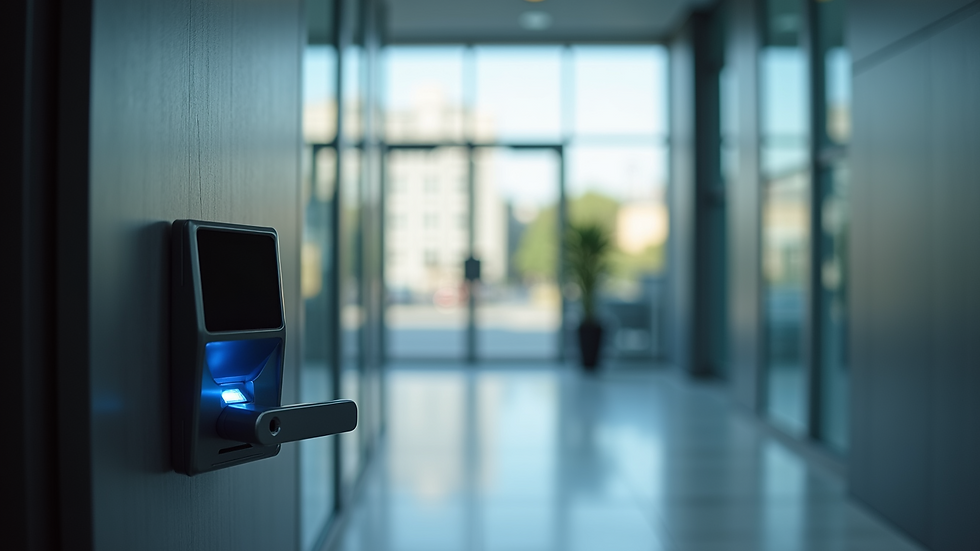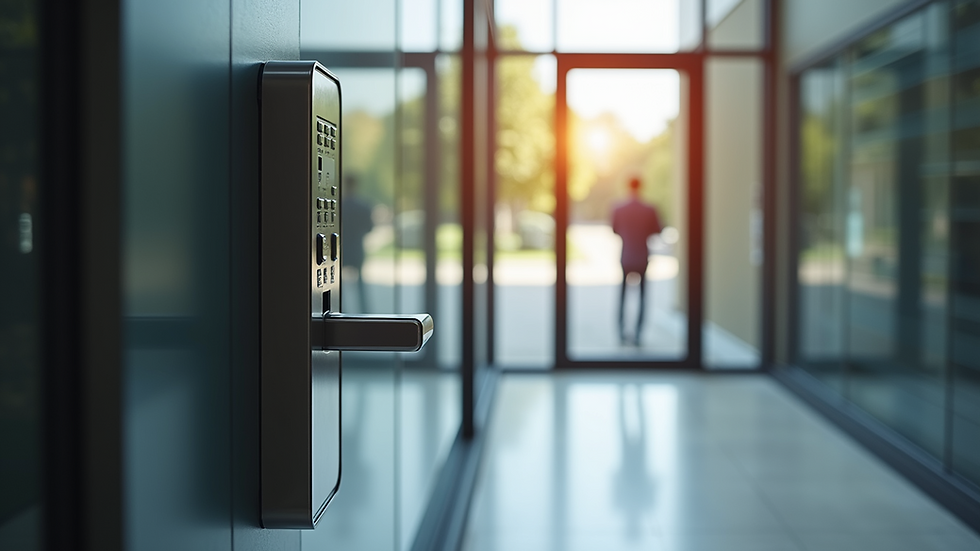Advanced Access Control Systems for Ultimate Security
- support295915
- Jul 2
- 5 min read
In today's world, security is paramount, especially in businesses and organizations that handle sensitive information. Traditional locking mechanisms are no longer sufficient in preventing unauthorized access. Instead, modern access solutions leverage technology to provide enhanced security, scalability, and ease of use. This blog post explores advanced access control systems that ensure the ultimate security for your premises.
Modern Access Solutions
With the evolution of technology, the landscape of security is transforming. Modern access solutions go beyond basic locks and keys to incorporate advanced systems that are not only effective but also user-friendly. These solutions provide organizations with the ability to manage who can enter specific areas, at what times, and under what conditions.
High-tech options include biometric systems, smart cards, and mobile credentials. Each of these approaches integrates software and hardware to create robust security frameworks that protect against unauthorized access. Data from these systems can be analyzed to identify patterns, which can inform further security measures.

One example of a component within these systems is the biometric access control device, which uses unique physical characteristics—like fingerprints or facial recognition—to verify a user's identity. This active identification process ensures that even if someone has a key, they cannot enter if their credentials do not match.
Security is only as strong as the access management processes in place. Organizations must ensure that systems are regularly updated and monitored. By integrating the latest security protocols and technologies, companies can stay one step ahead of potential threats.
Types of Advanced Access Control Systems
There are several advanced access control systems available, and each has its unique features and benefits. Understanding these systems helps businesses choose the right solution for their specific needs.
1. Biometric Access Control Systems
Biometric systems are gaining popularity due to their high level of security. These systems use unique biological traits to verify identity. Examples include:
Fingerprint Scanners: Often used for securing data centers and laboratories where confidentiality is critical.
Facial Recognition Systems: Common in corporate environments and airports for seamless identity verification.

Biometric systems reduce the risk of unauthorized entry and improve accountability. However, they require careful management of personal data to comply with privacy regulations.
2. Smart Card Access Systems
Smart card systems utilize physical cards embedded with chips that store user information. Users simply wave or insert their cards into a reader to gain entry. These systems can also log access events, providing a detailed trail of who accessed which areas and when.
Smart card systems can be customized to grant varying levels of access. For example, managerial staff might have broader access compared to entry-level employees. The flexibility of smart cards makes them suitable for a wide range of industries, from healthcare to financial services.
3. Mobile Access Control Systems
With the rise of smartphones, mobile access control has become an innovative solution for secure entry. Mobile credentials allow users to gain access through their smartphones by tapping on a reader or using Bluetooth technology.
One advantage of mobile access systems is convenience. Users no longer need to carry physical keys or cards. Instead, they can use their devices for secure entry, making it easier to manage access rights remotely.
What is Meant by Access Control?
Access control refers to the practice of regulating who or what can view or use resources in a computing environment. In a physical context, access control ensures that only authorized individuals can enter secured areas.
There are two primary types of access control:
Physical Access Control: Security measures to control entry into physical spaces, such as offices, labs, or storage areas.
Logical Access Control: Systems that grant or restrict access to digital resources, such as databases and software applications.
Implementing a robust access control strategy is imperative for safeguarding sensitive information and assets.
Benefits of Advanced Access Control Systems
Investing in advanced access control systems presents numerous advantages for organizations striving for optimal security.
Enhanced Security
One of the most evident benefits is enhanced security. High-tech solutions minimize the risk of unauthorized access by utilizing advanced technologies such as biometric authentication and smart cards. This ensures that entry points are secure, protecting valuable assets.
Compliance
Many industries are governed by regulations that mandate strict security measures. Advanced access control systems help organizations meet compliance requirements by providing detailed logs and reports of who accessed specific areas. These records are critical during audits and compliance checks.

Scalability
As organizations grow, their security needs evolve. Advanced systems can easily scale to accommodate new users, areas, and access levels. This flexibility allows businesses to adapt their security protocols in response to growth without overhauling existing systems.
Increased Efficiency
Automated access control solutions increase efficiency by eliminating the need for manual checks and paperwork. Users can enter securely and quickly, which saves time and enhances productivity.
Selecting the Right Advanced Access Control System
Choosing the right access control system requires careful consideration of several factors:
Security Needs: Assess the specific security threats your organization faces. Make sure that the access control system chosen can mitigate those risks effectively.
Budget: Determine your budget for both initial implementation and ongoing maintenance costs. Advanced systems can vary significantly in price, so it's vital to find a balance between security needs and financial resources.
Integration: Consider how well the new system will integrate with existing security protocols or other operational systems. Compatibility can significantly influence the effectiveness of your access control solutions.
User Preferences: Involve employees in the decision-making process to ensure that the chosen system is user-friendly and meets their needs. Secure systems are essential, but they should also be easy to use.
Vendor Support: Reliable vendor support is essential for successful implementation and long-term maintenance. Choose a vendor that offers training, ongoing technical help, and regular updates.
The Future of Access Control Systems
As technology continues to advance, future access control systems are likely to be even more sophisticated. Emerging technologies such as artificial intelligence (AI) and machine learning could enhance the ability of access control systems to predict threats, adapt in real time, and automate responses.
For example, AI can analyze user patterns to detect anomalies or potential security breaches. This data-driven approach adds another layer of security by allowing organizations to respond proactively rather than reactively.
Furthermore, as remote working becomes more prevalent, access control systems will need to address the challenges of securing both physical and digital spaces. Solutions will need to adapt to dynamic environments while maintaining robust security measures.
In conclusion, advanced access control systems provide a reliable and innovative way to ensure maximum security for organizations. By understanding the types, benefits, and future trends of these systems, businesses can make informed decisions regarding their security protocols.
For more insights on access control and security solutions, stay tuned to our blog!




Comments